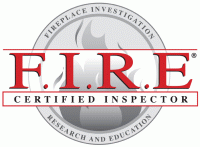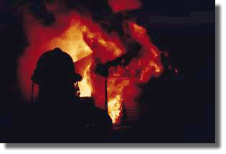 |
 |
Carbon Monoxide and Its Affects
Carbon Monoxide is a common byproduct of ignition. Exposure of this debilitating gas can result in physical injury or death.
What is Carbon Monoxide?
Carbon Monoxide is a colorless, odorless, tasteless, toxic gas that attaches itself to your red blood cells and limits your ability to absorb the necessary oxygen into your body.How is Carbon Monoxide Produced?
Carbon Monoxide is a byproduct of incomplete combustion of oil, gas, and solid-fuel. Carbon Monoxide is present in almost all of our fireplaces and appliances.
What Are Common Sources of Carbon Monoxide?
Common sources of carbon monoxide are oil-burning, gas-burning and solid-fuel burning heating appliances, boilers, water heaters, cooking appliances, decorative appliances, and fireplaces to name a few.
What Does This Mean to Me?
The development of carbon monoxide within our appliance systems does not necessarily indicate or support evidence of malfunction. However, our fireplaces, chimneys and vent systems are often deadly sources of carbon monoxide. These systems if correctly constructed and/or assembled are intended to convey all products of combustion, including carbon monoxide to the exterior of the dwelling. However, improper installation, product failure, drafting conflicts or natural events often result in an unnecessary and sometimes deadly exposure of carbon monoxide.
How Do I Prevent Injury to My Family?
This risk of exposure can be reduced with an annual safety inspection, new construction inspection or an inspection during repairs or replacement of an appliance or vent system. This inspection should be performed by a trained professional. The F.I.R.E. Certified Inspector is trained and tested on the building codes, industry standards, product application, historical performance and fire technology, just to name a few. This knowledge reflects the “Gold Standard” of the industry and a professional you can count on. Following the F.I.R.E. Certified Inspectors recommendations will further reduce risk to your family. The addition of a readily available Carbon Monoxide Detector (based on current standards) can also reduce Acute Exposure (one time high level exposure) but is not likely to reduce Chronic Exposure (low level constant exposure) that is very common with these systems. There are Carbon Monoxide Detectors available that will detect lower level exposure but these systems are less likely to be offered at your local retail stores. The Level II inspection, as recommended by our NFPA 211 Standards, will address both acute and chronic exposure.
Conclusion:
Having no smell, taste or color, carbon monoxide exposure can result in injury and even death. To compound this problem, our energy codes have increased the risk of exposure by tightening up the dwelling envelope and reducing ventilation and air exchange. With the improvement of insulation, vapor barriers, windows, doors and all aspect of the dwelling, it has become increasingly important to inspect and maintain all appliances regularly. A professionally trained Inspector can assist you in this process. Contact your local inspector today at www.gotoFIRE.com
For a list of industry links refer to “Industry Links” on this website.
Carbon Monoxide, CO Detector, Incomplete Combustion, Energy Code, Appliances, Injury, Fireplace, Chimney, Drafting, Inspection, Repair, Replacement, Service, Construction, Acute Exposure, Chronic Exposure

Fireplace
Investigation, Research & Education Service Copyright 2000
All Rights Reserved. Fireplace Investigation, Research & Education Service - No part of gotoFIRE.com including graphics may be used or reproduced in any way, or by any means, without the prior written permission of gotoFIRE.com. Use of any index or listing Software for the purpose of constructing a mailing list, creating promotional materials or producing a printed or electronic catalog of any kind is expressly forbidden without the prior written permission of gotoFIRE.com - All text, graphics and design on gotoFIRE.com is copyright by Fireplace
Investigation, Research & Education Service |